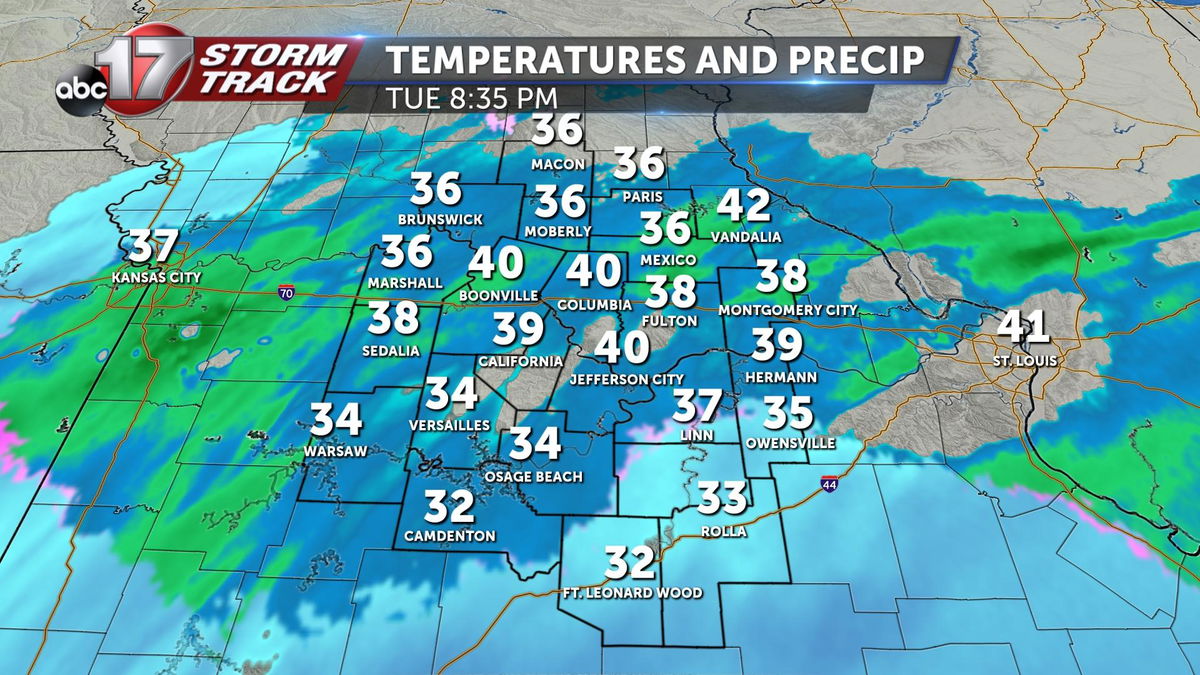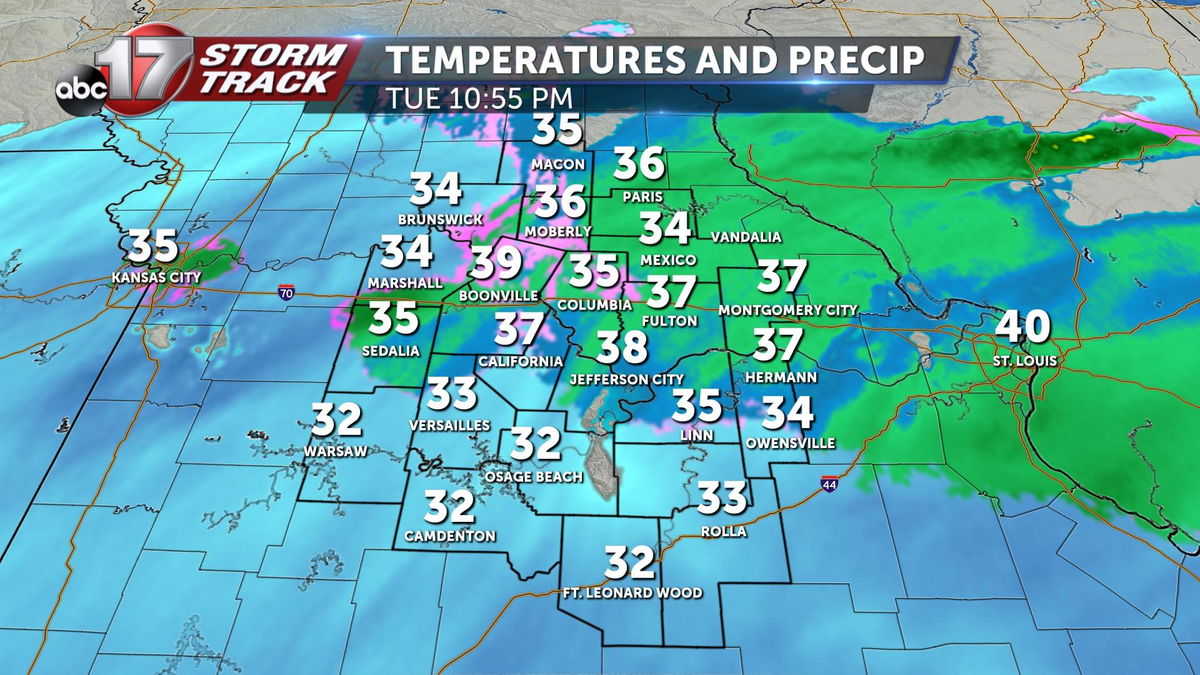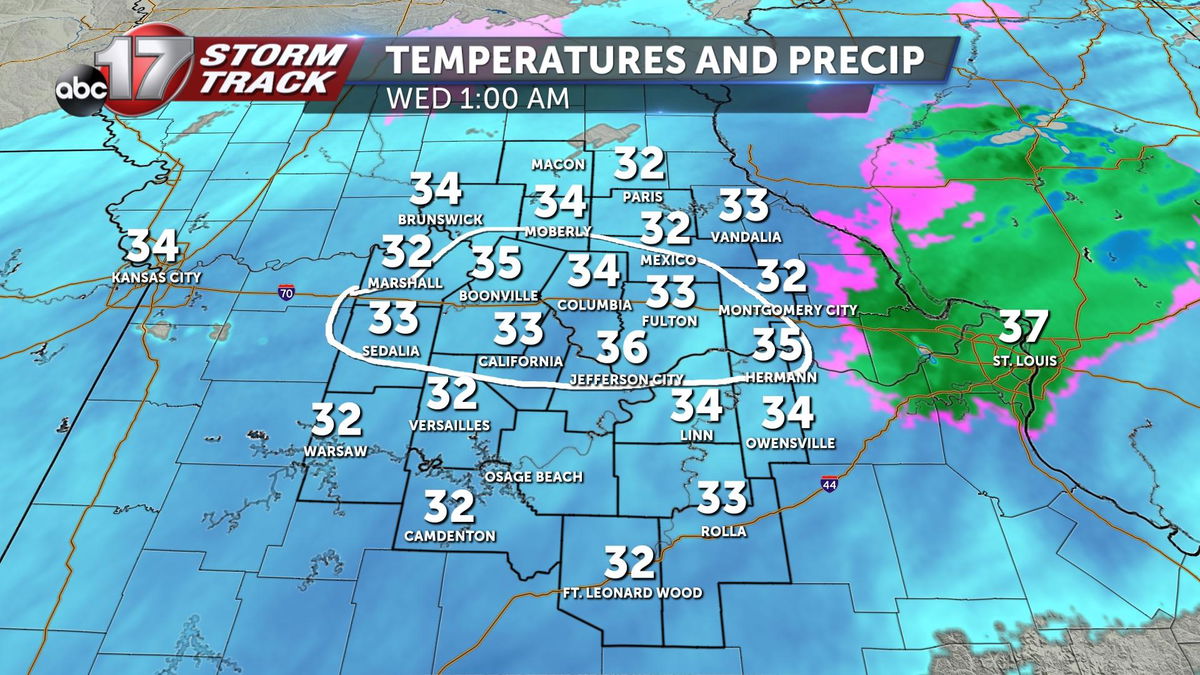How evaporative cooling cooled down parts of Central Missouri
Tuesday night saw a majority of Mid-Missouri getting some sort of precipitation. For most, the night began with a light drizzle, then switched to showers, and eventually snowfall. However, some areas stayed just enough above freezing to hold off the snow for a longer duration of time. The areas in mention are those surrounding Columbia Missouri.
A majority of Mid-Missouri's cold fronts often cool northern parts of the region first with a small temperature gradient as you look south across the area. This follows long term climatological data that the closer one moves towards the equator, the warmer the conditions are on average yearly. This past Tuesday night/ Wednesday mornings system saw a different approach.

Much of Central Missouri saw temperatures above freezing throughout the late evening/ overnight hours. Areas along I-44 down towards Rolla saw the coolest temperatures during this period of time.

Nearing 11:00 pm Tuesday night, areas toward northern Central Missouri begin to see falling temperatures.

Eventually by early Wednesday morning, snowfall covered all of Central Missouri. There was only one area during this period however that stayed warmer than surrounding areas. This area was centered over Columbia and cities nearby.
The reasoning for this occurrence was caused by a process known as evaporative cooling. Evaporative cooling occurs whenever the process of evaporation takes place changing the state of water from a liquid state to a gaseous state. During this instance, rain and snowfall in the south lead to small amounts of evaporation occurring first since the precipitation reached these areas much sooner. Evaporation is know as a cooling process. This process takes heat out of the environment in its energy transfer resulting in an isolated cooling on the surface temperatures near Rolla.
